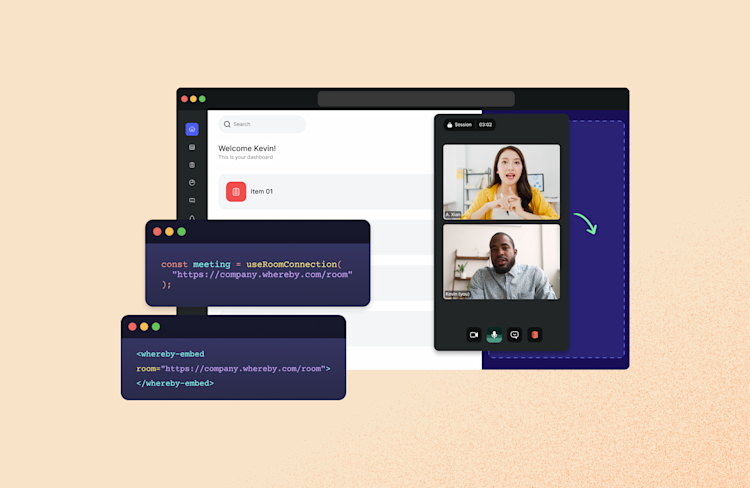Adapting your role to the new realm of home office
From doctors to yoga instructors - hundreds of millions of workers have taken their jobs online in the largest global experiment in remote work. Using video conferencing via Whereby, NHS speech language therapist Steph Burgess treats clients online, whereas Gitte Lill Paulsen at Bedriftsyoga keeps businesses in shape with online yoga classes.
Surprise! You’re now a virtual [engineer, marketer, salesperson, editor, customer service pro, real estate agent, psychologist, etc.]
You’re not alone. In what has become the largest global experiment in remote work, hundreds of millions of workers have taken jobs that can be done online in a hurry. Fields that previously were face-to-face only are embracing the new format, in the interests of preserving public health while keeping the economy going.
We’re holding meetings, standups, sales calls and brainstorming sessions entirely online — some of us for the first time ever. Exercise classes, lectures and workshops are digital. (Our kids, pets and spouses are sometimes dropping in, too.) Below are a couple of examples.
Yes, the doctor is still in.

In light of COVID-19, telemedicine is certainly having its moment — with good reason. Some practitioners, however, have been treating folks remotely for years. Steph Burgess, a NHS speech language therapist based in the U.K., is one of them. She’s been meeting with patients via video on Whereby.
“About three years ago I set up a national teletherapy service for adults who stammer, as there are many areas of the country where specialist stammering therapy isn’t available on the NHS,” Burgess said. “We won a Guardian Public Service Award for the service, the first of its kind in the country.”
They tested various video conferencing platforms with differing degrees of success. With feedback from clients, they chose to use Whereby as it most closely fit the necessary criteria to deliver a successful therapy service.
“I have always found the video and audio quality to be reliable, and it ticks the security and privacy boxes we need to be aware of in the NHS for maintaining confidentiality and protecting patient data. The screen-sharing function is very useful, as I am able to share resources with clients during the session, knowing that they can see exactly what I’m seeing. The thing I most like about it is it’s so easy to use, even for people who aren’t very confident with technology. With other platforms, we were having to do test sessions before the therapy could begin, but with Whereby, we just send the client a link and off we go!”
“I know that many of my colleagues are now racing to set up similar services because of the Covid-19 crisis, but I hope they will see that this way of working actually has many advantages over more traditional face-to-face appointments,” she added.
“My clients have their therapy from their home or place of work, and report being much more comfortable and relaxed than they would be in the clinic/hospital setting. They save money on transport and parking and don’t have anxiety about getting lost, being late or finding the right department. I find people are less likely to miss appointments, which is a potentially huge cost to the NHS. And of course, it has a very positive environmental impact. For that reason alone, I hope that many clinicians will continue with this new way of working once we get through the pandemic.”
Perfecting your downward dog.
Spending loads of time indoors doesn’t mean you have to give up on exercise. For Bedriftsyoga in Norway, classes have moved online. Students gather for synchronous instruction in vinyasa, hatha, and other types of yoga from home, as their instructor leads them in a series of poses and offers the occasional suggestion to their form.
Mikkel Lund Dahl, CEO, says the shift was customer-led. “One of our most eager customers wanted to continue having classes through Whereby,” Dahl Lund said. “I researched and found out that it’s a Norwegian company, and wanted to test it with more partners. It has worked really well, so we continued.”
The studio currently offers classes for individuals and for groups as part of companies’ internal wellness programs.
Gitte Lill Paulsen, business partner and an instructor at Bedriftsyoga, likes that she can give personal feedback to everyone who appears on the screen — and that wellness can remain a priority for all. “It’s really nice being able to take care of our customers in a time where everyone needs yoga more than ever!”
Its simplicity was a surprise to Hanne Hegle, instructor and business partner. “In the beginning, I was afraid it would be difficult for the less techy participants, but in my experience, no one has had any trouble,” Hegle said.
“It’s also great to see how much the participants enjoy seeing each other as well! One architecture company sat one hour after class to chat and catch up on life.”
Over to you…
Tell us: What are some of the ways your job has gone digital? How has video helped you to keep in touch with colleagues, clients and classes?
Share your story in a comment.





